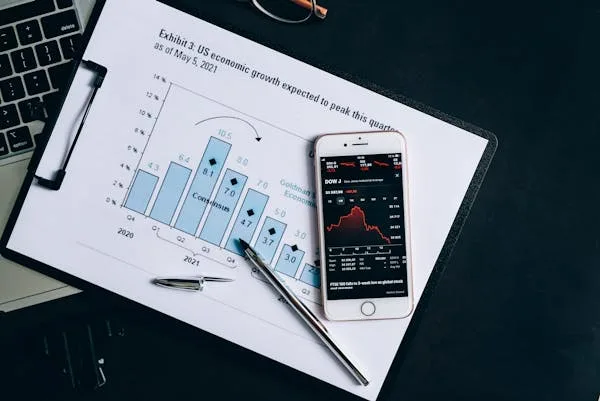Launching a product is not just about building something useful—it’s about making sure the right people know about it, buy into it, and stick with it. That’s where a full Go-To-Market (GTM) strategy comes into play. But here’s the big question: how much does it really cost to do it right?
1. The average GTM strategy execution costs between $250,000 to $1.5 million for mid-sized B2B SaaS companies
Understanding the range
This number might seem big at first glance—and it is—but it’s also realistic. The cost of a full GTM strategy depends heavily on the industry, size of the team, the length of the campaign, and the number of channels used.
In mid-sized B2B SaaS companies, these campaigns are long, data-heavy, and rely on multiple tech tools and skilled personnel.
What drives the cost?
There are multiple moving parts. First, there’s the team—hiring or assigning product marketers, content creators, performance marketers, and sales development reps. Then there are the tools—CRMs, marketing automation, analytics software, and sales enablement platforms.
Add to that the paid media budget, the creative assets, website development or redesigns, and the initial research and strategy building phase. All of these drive the cost upward.
How to make it efficient
One way to manage this cost is to start small and validate. Test messaging with smaller audience segments. Run shorter ad cycles before committing to large spends. Partner with freelancers or agencies for non-core work instead of full-time hires. Use lean tools that do more with fewer integrations.
This range is not a target—it’s a warning and a benchmark. Your real goal is not to match this spend but to make every dollar stretch as far as it can. If you’re at the lower end of the range, that’s not a problem, as long as you’re getting traction.
2. Early-stage startups typically spend 20–40% of total funding on GTM efforts in the first year
Why GTM eats such a large chunk
Startups don’t have revenue to rely on in the beginning. What they have is capital—often investor money. A big part of that capital needs to go into marketing and sales to help them find product-market fit and grow initial traction. It’s not just about launching a product—it’s about proving that the product deserves to exist in the market.
Breaking down the investment
When a startup raises, say, $1 million in seed funding, spending $200,000 to $400,000 on GTM may seem steep—but it’s often necessary. That money typically goes into team salaries, brand building, ads, content, and early outreach.
The trick is using this investment to learn fast. Every dollar should help you understand your audience better, shape your messaging, or improve your conversion rates.
How to control it
Instead of trying to do everything, focus on two or three core channels that match your customer’s behavior. Skip expensive PR firms and trade shows early on. Use free or low-cost tools wherever possible. And focus more on distribution than just creation—great content means nothing if no one sees it.
3. The average customer acquisition cost (CAC) for SaaS companies is $205 per customer
Why CAC is your North Star
This stat tells you how much it costs, on average, to turn a lead into a paying customer. For SaaS businesses, this number can make or break the business model. If your CAC is too high relative to your customer’s lifetime value (LTV), you’re on a path to burn cash without ever turning profitable.
Where that $205 goes
That number includes ad spend, salaries of sales and marketing teams, software tools, and sometimes onboarding and support. It’s an average—but your actual cost might be higher or lower depending on your model.
If you have a sales-led approach, CAC will skew higher due to longer sales cycles and higher personnel costs. If you’re product-led, CAC tends to be lower, especially with self-serve signups.
How to lower it
Improving CAC means becoming smarter with targeting and faster with conversion. Refine your ICP (ideal customer profile). Tighten your ad messaging. Invest in nurturing campaigns that don’t require human effort. And most importantly—improve your onboarding and retention so that the CAC is offset by high LTV.
4. Companies spend an average of 11% of total revenue on marketing alone during GTM
Why marketing takes this slice
When you launch a product, people need to know it exists. That’s marketing’s job. During a GTM push, companies often direct about 11% of their total revenue into marketing activities. This includes brand campaigns, digital ads, content creation, influencer partnerships, and marketing operations.
This percentage isn’t fixed. It can be higher in aggressive growth stages or in industries where customer acquisition is highly competitive. In SaaS, where the product is intangible, trust-building through marketing becomes even more vital.
How to make that 11% count
It’s not just about spend—it’s about smart allocation. Don’t dump your budget into one tactic. Instead, build a mix of channels and test everything in small doses. Track your return on spend and double down only on what works. This approach prevents wasted money and accelerates learning.
Also, use performance marketing dashboards to measure what’s actually working. Attribution tools, though not perfect, will give you better clarity. From there, you can adjust your investments to stay within or below the 11% range while maximizing impact.
5. Sales expenses account for approximately 15–20% of GTM costs in B2B tech
Sales eats up a big chunk
In B2B tech, sales teams play a massive role in converting interest into deals. That means hiring sales reps, training them, giving them the right tools, and supporting their pipeline-building efforts. These costs together often make up 15–20% of the total GTM budget.
If you’re building an outbound-driven sales strategy, the cost rises fast. Sales reps need time to ramp, they need support from marketing, and the process to close deals can be long.
Optimizing your sales spend
To make the most of this spend, your sales team must be tightly aligned with your marketing team. Messaging should be consistent. Leads should be qualified. Sales enablement materials like battle cards, pitch decks, and case studies should be ready.
Also, monitor sales cycles closely. If deals take too long to close, the costs go up without the revenue to support them. Trim any steps in the process that don’t move the needle.
And if your product allows for it, consider shifting to a product-led model. This can cut sales expenses dramatically by letting users onboard themselves.
6. Hiring a complete GTM team (marketing, sales, customer success) costs around $500,000 annually
The real cost of talent
A GTM team isn’t just one person—it’s a group of specialists working in sync. You’ll need a head of marketing, content strategist, paid media expert, sales manager, account executives, customer success reps, and often a product marketer or two.
Together, their salaries and benefits easily hit $500,000 or more per year. And that doesn’t even include the cost of onboarding, tools, and management time.
When to build vs when to outsource
If you’re early-stage, you don’t need to hire everyone at once. You can outsource content creation, use fractional CMOs, or hire agencies for paid media. Build in-house roles only when the function is critical to daily operations or when external options stop scaling.
As you scale, having an internal team becomes more cost-effective—but only if roles are clearly defined and productivity is high. Avoid overlap between team members and make sure each hire is responsible for a metric that contributes to GTM success.
7. Launch event budgets range from $10,000 to $200,000, depending on market size and region
Do launch events matter?
A product launch can be a quiet rollout or a big event. In some markets—especially in enterprise or tech—a launch event can help generate buzz, build credibility, and create demand. Depending on your scale, the event might be virtual, hybrid, or physical.
Budgets for such events range from $10,000 for a simple webinar series, to $200,000 for large-scale conferences or roadshows. These costs include venue, promotion, production, logistics, and follow-up campaigns.
How to launch without breaking the bank
If your audience is digital, start with virtual events. A well-run webinar with a great guest and strong follow-up can yield better results than a flashy physical event.
Focus on quality over spectacle. What matters is the value you provide. Is your messaging clear? Are your attendees learning something new? Do they leave the event more excited about your product?
Also, record your launch content. Repurpose it into blog posts, social clips, email campaigns, and ads. That way, your one-time investment creates long-term assets.
8. The average content marketing budget for GTM is $72,000 per year for mid-market businesses
Why content is a core GTM lever
Content is the quiet workhorse of GTM. It helps educate customers, builds SEO equity, nurtures leads, and supports sales conversations. For mid-market businesses, a content budget of around $72,000 a year is standard. That translates to about $6,000 per month.
This cost includes blog writing, video production, thought leadership, case studies, whitepapers, and distribution. It might also include freelancers, agencies, or internal writers.
Making your content budget work
Don’t try to cover every topic. Focus on your customer’s top questions and problems. Build pillar content around those, then repurpose each asset in multiple formats—blogs, LinkedIn posts, newsletters, and webinars.
Invest in content operations early. Use tools to manage workflows, editorial calendars, and performance tracking. And make sure your content supports your GTM goals—each piece should either drive traffic, capture leads, or close deals.
9. Paid advertising costs during GTM can average $120,000 per year across channels
Paying to accelerate
Paid ads are often the fastest way to drive visibility in GTM. But they’re also one of the most expensive channels. A typical spend of $120,000 a year—or $10,000 a month—goes toward search ads, social media, retargeting, display ads, and sometimes sponsored content.
The problem? Many companies spend this budget without a clear plan. They chase impressions rather than conversions. That’s how budgets get wasted.
Planning your paid strategy
Start by choosing the right channel for your audience. If your customers hang out on LinkedIn, focus there. If they search with intent, start with Google Ads.
Use small daily budgets to test creatives and messages. Kill underperformers quickly. Track your CAC, CTR, and cost per lead weekly.
Also, make sure your landing pages are tight. Good ads with bad landing pages lead to lost opportunities and high spend.
10. Companies using outbound sales strategies in GTM allocate up to 60% of GTM costs to SDRs
Outbound is expensive—but can be effective
When your GTM relies on outbound, sales development reps (SDRs) become your frontline. They do cold outreach, qualify leads, and set meetings. This makes them central to your GTM motion, especially in B2B.
But outbound doesn’t come cheap. Between SDR salaries, tools, training, and management, companies can end up spending 60% of their GTM budget on this single function.
How to optimize outbound spend
Start by refining your ICP and targeting. If SDRs are wasting time on unqualified leads, you’re losing money. Use enrichment tools and automation to improve lead quality.
Give your SDRs scripts, email sequences, objection handling guides, and regular feedback. The more support they have, the better their results.
And track their performance. Are they generating opportunities? Are those converting to revenue? If not, it may be time to adjust the approach—or the team.
11. Benchmark email marketing cost during GTM is $1,500 to $5,000/month depending on list size
Email still delivers
Email might feel old-school, but during a GTM push, it’s one of the most dependable tools in your arsenal. You own your email list. You control the message. And it’s one of the few channels where you can build a direct relationship with leads and customers. The monthly spend of $1,500 to $5,000 includes software, design, copywriting, list management, and segmentation.
That range varies based on the size of your email list, the number of campaigns sent, and whether you’re using internal resources or outsourcing.
How to make email work harder
The success of email doesn’t come from volume—it comes from precision. You need to segment your list well, so messages feel personal. Send content that adds value, not just sales pitches. Use behavior triggers: if someone downloads a guide, send them a follow-up based on that topic.
Invest in testing subject lines, preview text, and CTAs. Small tweaks can double your open and click rates. And make sure your emails are mobile-optimized—most people read them on their phones.
Also, track your email metrics weekly. If open rates drop or unsubscribes spike, your content might be off the mark. Adjust accordingly.
12. A full GTM tech stack (CRM, analytics, automation, CMS) costs $30,000 to $100,000 annually
Tools are not optional
You can’t run a modern GTM strategy without tools. You need a CRM to track leads, automation to nurture them, analytics to guide decisions, and a CMS to manage content. The full tech stack for these capabilities typically runs between $30,000 and $100,000 per year for growing companies.
These tools save time, improve targeting, and help scale your efforts. But they also eat into your budget quickly, especially if you buy tools without clear goals.
How to build a cost-effective stack
Start with what’s essential. A CRM like HubSpot or Salesforce. Email marketing like Mailchimp or ActiveCampaign. Web analytics from Google. Over time, add tools based on need—don’t overbuild early on.
Choose platforms that integrate well with each other. Disconnected tools lead to duplicate data and manual work. Also, watch out for user-based pricing. As your team grows, those costs can balloon.
Audit your tools every six months. Are you using them fully? Could you downgrade or consolidate? Many companies overpay for software that sits idle.
13. The average SEO investment for GTM is $2,000 to $7,500/month
Why SEO matters early
Search engine optimization takes time. That’s why it’s crucial to invest in it during your GTM strategy, even if it doesn’t pay off immediately. Good SEO helps customers discover your product when they’re looking for answers, not ads.
The monthly investment includes keyword research, content writing, on-page optimization, technical improvements, and link-building.
Smart SEO during GTM
Start by identifying the core problems your product solves. Build content around those problems, not just features. Focus on low-competition, high-intent keywords. You don’t need to rank for everything—just the right things.
Use tools like Ahrefs, SEMrush, or Surfer to guide your content. Fix technical issues early—broken links, slow pages, poor mobile usability. These hurt rankings and user experience.

Also, don’t chase vanity metrics. Ranking for a high-volume keyword that never converts won’t help. Measure how much traffic turns into leads and users.
And remember: SEO is a compounding asset. The sooner you start, the more return you get over time.
14. Product marketing—including messaging, positioning, and launch assets—averages $50,000+
Product marketing is your GTM backbone
It’s one of the most underestimated areas in GTM—but it’s also one of the most critical. Product marketing connects your product to the market. It defines how you talk about what you do, who you serve, and why it matters.
That $50,000+ investment includes customer research, competitive analysis, positioning workshops, messaging guides, and asset creation—like pitch decks, product pages, and videos.
Doing product marketing right
Start with your positioning. What makes you different? Why now? Why you? These answers shape your website, sales scripts, and ads.
Then refine your messaging. Use customer words. Avoid jargon. Talk about outcomes, not features. Create messaging docs so the whole team speaks the same language.
Finally, build assets that support every stage of the funnel—from awareness (explainer videos) to decision-making (case studies). And don’t treat product marketing as a one-time thing. Revisit it after every market shift, launch, or major feedback cycle.
15. Hiring a GTM consultant or agency ranges from $15,000 to $150,000+ depending on scope
When external help makes sense
Sometimes you don’t have the internal bandwidth or expertise to run a GTM strategy. That’s where consultants and agencies come in. They bring fresh perspective, proven playbooks, and fast execution.
The cost varies depending on what you need. A short-term strategy workshop might run $15,000. A full-service GTM launch with branding, messaging, content, and campaigns can exceed $150,000.
Getting ROI from consultants
Don’t hire help without a clear goal. Are you looking to validate a market? Build awareness? Hit pipeline targets? Define the outcomes, then find a partner with that expertise.
Vet your options well. Ask for case studies. Talk to past clients. And ensure they’ve worked in your industry or business model.
Set clear deliverables. Avoid open-ended contracts that drag on. And make sure knowledge transfer is part of the deal—so your internal team can run things when the engagement ends.
Consultants are best when you need speed, clarity, or scale. Just make sure their work leads to real movement, not just decks.
16. Mid-market companies spend $50,000 to $250,000 on brand development during GTM
Why brand matters early
In competitive markets, your brand is what makes people remember you. It’s not just your logo or colors—it’s your story, your tone, your promise. During GTM, investing in a strong brand helps you stand out and builds trust fast.
Brand development includes visual identity, brand voice, messaging architecture, customer personas, and sometimes even naming.
Building a brand that works
Start by understanding your audience. What do they care about? What do they fear? What do they aspire to? Build your brand around those insights, not just your product.
Work with designers and strategists who understand startups and tech. Create brand guidelines that cover voice, visuals, and behavior. And make sure your brand shows up consistently—on your website, in sales calls, in social posts, everywhere.
Great brands aren’t loud—they’re clear. Focus on clarity and authenticity. That’s what builds trust.
17. Influencer and PR outreach in GTM averages $20,000 to $100,000 for early campaigns
Building buzz with borrowed credibility
When launching something new, getting others to talk about you helps amplify your reach. Influencers and press can get your name in front of new audiences and give you credibility you can’t buy directly.
But good PR and influencer marketing takes more than money. It requires strong messaging, good timing, and real relationships. That’s why early campaigns often cost between $20,000 and $100,000.
Making third-party marketing work
Pick influencers who are trusted by your audience, not just popular. Relevance beats reach. Micro-influencers with high engagement often outperform big names.
For PR, craft a compelling story. Why does your product matter now? What problem does it solve? Avoid generic pitches. Build relationships with journalists before you need them.

Also, track results. Did the campaign drive traffic? Signups? Press mentions? Adjust based on what works—not just what looks good.
18. The average time-to-revenue after GTM is 6 to 12 months, increasing total cost of execution
Why revenue doesn’t show up immediately
Most GTM plans are built for the long game. You don’t flip a switch and start printing revenue. After a product hits the market, it can take six to twelve months before consistent revenue flows in. That delay increases the real cost of execution—because your team, tools, and marketing need funding during the wait.
This is especially true for B2B products with long sales cycles. Even with a solid GTM strategy, you may be nurturing leads for months before deals close.
How to stay cash-smart during the gap
Start by forecasting realistically. Build financial models that account for the lag between launch and revenue. Factor in how long it takes to move leads through the funnel.
Focus early marketing efforts on quick wins—channels like paid search, retargeting, or partner referrals that deliver fast results. Simultaneously, invest in long-term plays like SEO and brand building.
Also, watch your burn rate. If you’re waiting on revenue, control spending. Every unnecessary cost extends your runway risk.
Bridge the gap with low-cost experiments. Run webinars, offer early adopter deals, or build community to keep momentum alive while the big deals mature.
19. Over 70% of companies overspend by at least 25% on their GTM due to underbudgeting
Why underbudgeting is so common
It’s easy to underestimate how much a GTM strategy will cost. You plan for ads, but forget about tools. You hire a marketer, then realize you need sales support. You scope content for three months but run campaigns for six.
That’s why over 70% of companies go over budget—and by a lot. Usually by at least 25%.
How to avoid GTM budget surprises
Build buffer into your budget. Plan for unexpected needs—like redoing messaging, hiring freelancers, or expanding campaign duration. Add 20% contingency by default.
Create a detailed budget, not a lump sum. Break it down by function—ads, people, content, tools, events—and track each line item monthly.
Also, revisit the budget often. GTM isn’t static. If one channel is working better than others, reallocate funds rather than spending blindly across all areas.
Make cost tracking part of weekly GTM meetings. That way, you’ll spot overruns early, not after you’ve blown through the money.
20. The average sales enablement tool costs $5,000 to $20,000/year as part of GTM
Why sales enablement matters
Sales teams don’t just need leads—they need the right tools to close those leads. Sales enablement platforms help organize content, surface insights, automate follow-ups, and track engagement. This leads to faster, more confident selling.
The cost of a solid enablement platform ranges from $5,000 to $20,000 per year depending on features and team size.
Getting the most from your tools
Before investing, ask your sales team what they need. Are they struggling to find the right case study? Do they need help personalizing outreach? Choose a tool that solves real friction.
Integrate the tool with your CRM and marketing platforms. That way, sales gets a full picture of the customer journey. And make sure someone owns the tool—keeps it updated, audits usage, and trains the team.
If you’re a small team, you may not need a dedicated tool. A shared drive and CRM integration might be enough. But as your GTM motion scales, these tools offer real leverage.
21. A market research project for GTM typically costs $15,000 to $75,000
The value of knowing your customer
Good GTM strategies are built on truth—not guesses. Market research helps you find that truth. It tells you what customers want, what they’re struggling with, who your competitors are, and where your messaging fits.
This research usually comes in the form of surveys, interviews, competitive audits, or analyst reports—and the cost ranges from $15,000 to $75,000 depending on depth.

When and how to invest in research
Do research early. It should guide your positioning, pricing, and product roadmap—not just validate what you already believe.
Start with a mix of qualitative and quantitative insights. Talk to a dozen potential users. Run surveys to test assumptions. Analyze competitor messaging.
If you can’t afford an agency, DIY your research. Use tools like Typeform, Google Surveys, or usertesting.com. Interview prospects. Scrape reviews. Mine support tickets.
Research isn’t a one-time expense. Revisit it when entering new markets, changing pricing, or shifting your GTM model.
22. Localization and translation for GTM can cost $10,000 to $50,000 for global strategies
Going global isn’t just copy-paste
If your GTM strategy includes international markets, localization is essential. That doesn’t mean translating your homepage—it means adapting your entire experience for local context. That includes language, tone, visuals, pricing, compliance, and culture.
Costs typically range from $10,000 to $50,000 depending on the number of languages, depth of content, and legal requirements.
Doing localization right
Hire professional translators familiar with your industry. Avoid automated tools for sales or legal copy—they often miss nuance and can damage trust.
Also, localize your assets—not just your site. That means videos, slide decks, contracts, and onboarding flows. Use local examples. Adjust for currency and tax formats.
And don’t assume one-size-fits-all. What works in Germany might flop in Japan. Treat each market as a mini-GTM strategy with its own validation, budget, and messaging.
23. B2B SaaS companies spend an average of $18,000 to acquire their first 100 customers
The real cost of early traction
Getting your first 100 customers is the hardest part. You’re still figuring out your product, message, and audience. Every customer is a learning experience. That’s why the average spend to acquire the first hundred comes out to around $18,000—or $180 per customer.
This figure includes paid campaigns, founder time, email tools, webinars, and sometimes even travel.
How to make early spend count
Focus on learning over scaling. Run small campaigns with clear goals. What messages drive clicks? What emails get replies? Which audiences convert?
Don’t waste budget on mass marketing. Handpick prospects. Reach out manually. Use early customer calls to build features and refine your pitch.
Also, ask for referrals. Happy early adopters often know others like them. A few warm intros can outperform thousands in paid reach.
Track every dollar. Know which channels bring in real users and which ones just burn time and money.
24. Performance marketing accounts for 20–30% of GTM budget in high-velocity segments
Speed demands spend
If you’re in a fast-moving market—like fintech, AI, or productivity SaaS—performance marketing becomes a big lever. It delivers quick results, drives traffic fast, and scales with budget. That’s why companies often allocate 20–30% of their GTM budget to it.
This includes Google Ads, LinkedIn campaigns, social media, and retargeting.
How to run it smart
Start with clear goals. Are you driving signups, demos, or leads? Tailor your campaigns to match the stage of your funnel.
Avoid broad targeting. Go narrow, even if it means fewer clicks. You want high-intent traffic, not just noise.

Test different creatives, headlines, and offers. Small differences can change your ROI. And measure everything—clicks, conversions, CAC, and lifetime value.
Performance marketing works best when paired with good landing pages and strong follow-up. Don’t just send people to your homepage. Guide them through a focused journey.
25. Companies spend an average of $7,500 per trade show as part of GTM event strategy
Events still play a role
Despite the rise of digital channels, trade shows and industry events still matter—especially in B2B markets. They offer high-value networking, face-to-face selling, and brand visibility. Companies often spend around $7,500 per show, covering booth space, materials, travel, and promotion.
For a GTM strategy, trade shows can help validate interest, generate leads, and accelerate deals already in the pipeline.
Making events worth the cost
Don’t attend every show. Pick events where your target customers or key partners will actually be. Small, focused shows often bring better ROI than massive conferences.
Set clear goals before attending. Are you booking meetings, building brand awareness, or closing deals? Build your strategy around that.
Also, prep in advance. Reach out to prospects ahead of the event. Set meetings. Promote your presence. And after the show, follow up fast. Most event ROI is lost because follow-up is too slow or unfocused.
Track everything—leads collected, deals influenced, pipeline generated. Then decide whether to return next year or not.
26. Training internal teams during GTM averages $2,000 to $10,000 per team
Why internal alignment matters
You can have the best marketing in the world, but if your team doesn’t understand the product or how to sell it, your GTM won’t succeed. That’s where training comes in—on the product, the messaging, the tools, and the process.
Training costs can range from $2,000 to $10,000 per team depending on whether you build the program in-house or bring in experts.
How to train for impact
Start with what matters most: the story. Every team member—from sales to support—should understand the problem your product solves and how to explain it.
Build role-specific training. Sales needs objection handling. Marketing needs messaging clarity. Support needs feature fluency.
Use live sessions and recorded modules. Mix in practice, quizzes, and feedback loops. And measure comprehension—not just completion.
Refresh training after big updates or market shifts. GTM isn’t static, and neither should your internal readiness be.
27. A website redesign for GTM readiness costs $15,000 to $75,000
Your website is the front door
During a GTM push, your website becomes your best salesperson. It needs to tell your story clearly, capture interest fast, and convert visitors to leads or users. That’s why many companies invest in a full redesign before going to market.
Costs range from $15,000 for a simple refresh to $75,000 for full custom builds with interactive elements, integrations, and content migration.

Building a site that converts
Start with messaging. What do you want visitors to understand in five seconds? That’s your homepage headline. Everything else supports it.
Design for clarity. Simple layouts, short copy, strong CTAs. Remove distractions. Guide users through a journey.
Use landing pages for each campaign or persona. Tailor your message, imagery, and CTA for specific segments.
And test continuously. Use heatmaps, A/B testing, and session recordings to find friction points and improve over time.
28. Ongoing GTM optimization and iteration costs $25,000 to $100,000 annually
GTM doesn’t end at launch
Once your product hits the market, the work has just begun. Campaigns need tweaking. Messaging needs refining. New segments appear. That’s why ongoing GTM optimization can cost $25,000 to $100,000 a year—even after the initial launch is done.
This includes testing new channels, refreshing content, updating positioning, and refining sales scripts based on feedback.
Staying agile after launch
Build a rhythm of review. Weekly check-ins on metrics. Monthly retros on channel performance. Quarterly adjustments to strategy.
Listen to feedback—from customers, sales, and support. What objections are you hearing? What’s confusing people?
Keep experimenting. Test new ad creatives, try a new onboarding flow, explore different pricing angles. And document everything so you can learn and scale.
Post-launch GTM work is where you move from traction to growth. Don’t treat it as an afterthought.
29. 60% of GTM spend is frontloaded in the first 6 months of execution
Why GTM is heavy upfront
Most of the investment in a GTM plan happens before results show up. Building the brand, writing the content, setting up campaigns, hiring the team—these things happen early. That’s why around 60% of the total GTM budget is spent in the first six months.
This frontloading can create pressure, especially for startups trying to prove traction quickly.
Managing spend and expectations
Plan for this early burn. Make sure your cash flow supports six months of upfront investment. Communicate clearly with stakeholders or investors about when returns are expected.
Also, measure leading indicators—not just revenue. Are site visits growing? Are leads converting? Are SDRs booking meetings? These signals show whether your spend is moving in the right direction.
Try to build reusable assets early—like evergreen content, templates, and email sequences. That way, the value from early spend continues to pay off long after the launch phase ends.
30. Companies with product-led GTM models spend 30–50% less than sales-led counterparts
Why product-led GTM can be more efficient
In a product-led growth (PLG) model, users try the product before buying. This creates lower CAC, shorter sales cycles, and reduced need for large sales teams. As a result, PLG companies often spend 30–50% less on GTM than sales-led organizations.
Instead of big campaigns, PLG GTM focuses on great onboarding, in-app education, and referral loops.
Building a product that sells itself
If PLG fits your model, invest in your product experience first. Make signup seamless. Reduce time-to-value. Give users a wow moment fast.
Use in-app prompts, tooltips, and education to guide new users. Track behavior and trigger messages based on activity. Offer freemium or trial options to lower the barrier.
Also, close the loop. Make it easy for users to upgrade, refer others, or reach out for help. Use product data to inform your GTM campaigns—what features drive retention, who’s using what, where people drop off.

PLG isn’t a shortcut. It takes careful design and data discipline. But when done right, it creates a powerful, scalable GTM engine with lower costs and higher velocity.
Conclusion
Executing a full GTM strategy is a serious investment. But knowing what to expect—and where others succeed or overspend—gives you a roadmap. These 30 benchmarks offer not just numbers, but insight into what really drives GTM success. Use them to budget smart, stay agile, and align your team on what matters.





















